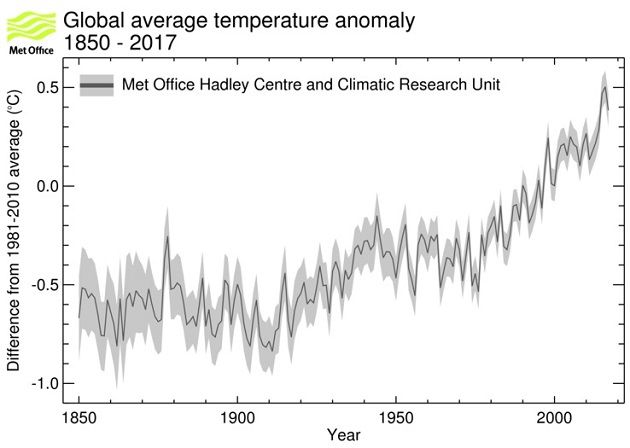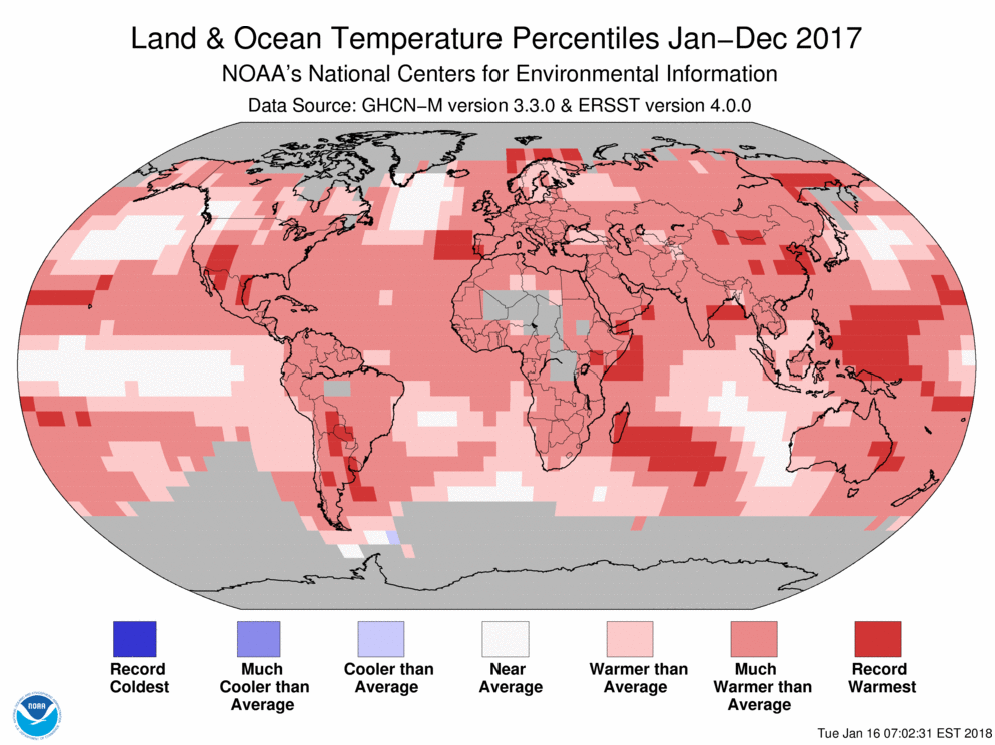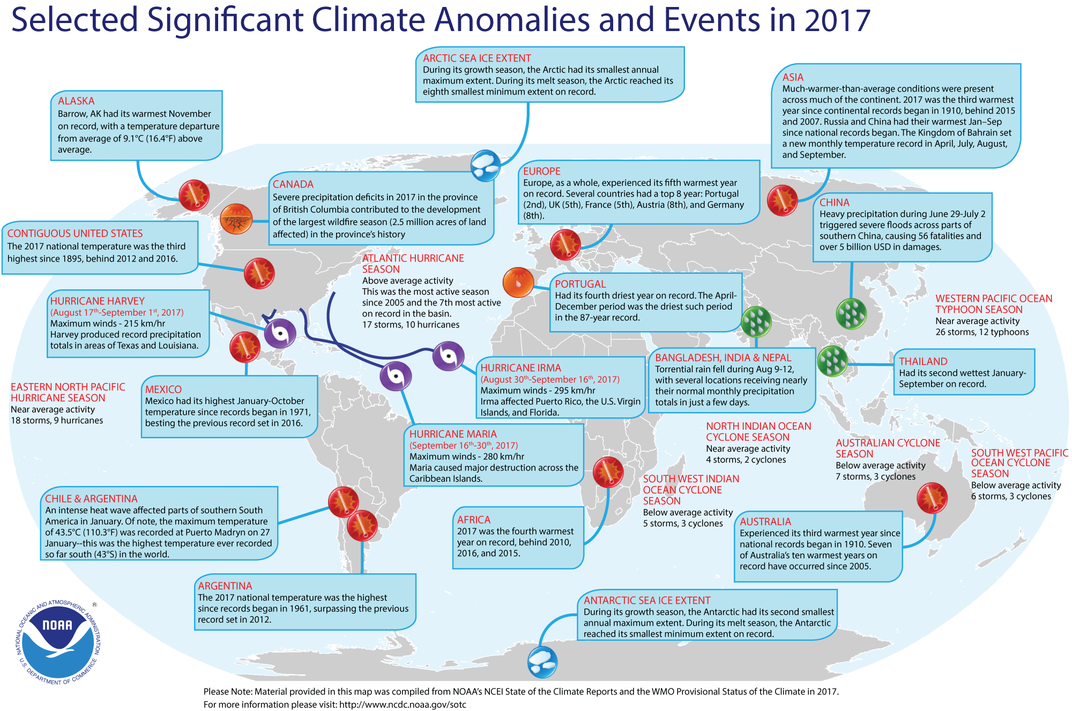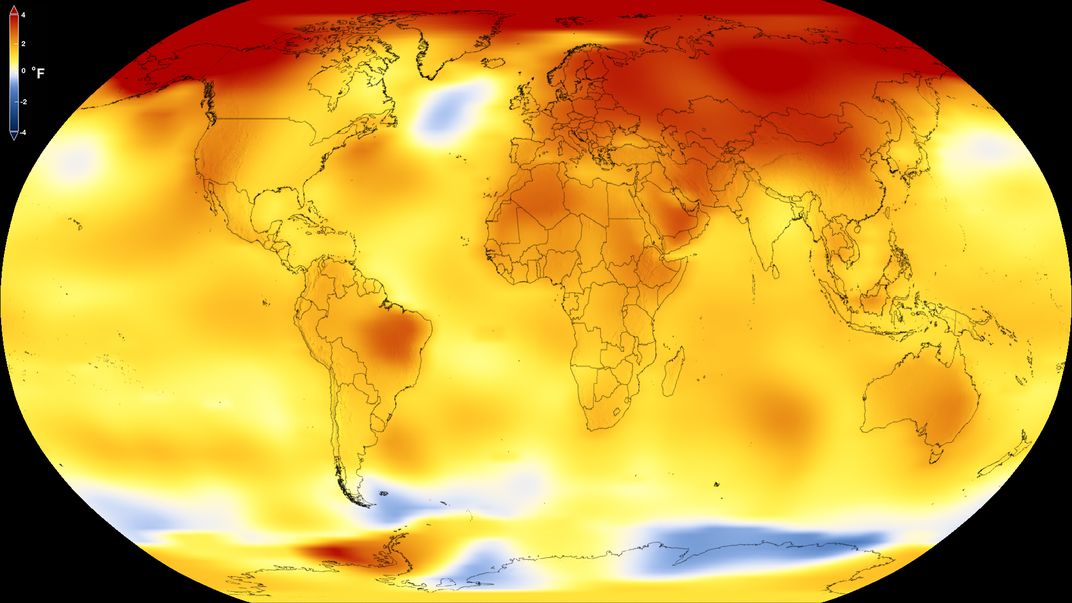2017 Was Another Really Hot Year (Even Without El Niño)
Last year joins list of top three hottest ever recorded, according to multiple new reports
/https://tf-cmsv2-smithsonianmag-media.s3.amazonaws.com/filer/24/df/24df5395-6241-409e-9e80-2837f97ccc8a/18-003.jpg)
As science agencies analyze their data from 2017, one thing is clear: It was another abnormally warm year and continued to set records for what the new normal looks like.
NASA, the National Oceanic and Atmospheric Administration (NOAA), UK's Met Office, and the World Meteorological Organization all released statements this week reviewing climate trends for 2017, concluding last year was among the three hottest years on record. As Zahra Hirji reports for BuzzFeed, NASA scientists, who include temperatures from all over the globe in their analysis, lists 2017 as the second-hottest year, while NOAA researchers, who exclude the rapidly-warming polar regions in their analysis, rank it as the third-hottest year on record. The different analysis result in a 0.1 degree Fahrenheit discrepancy, enough to change the year's ranking.
“It’s two different approaches,” NOAA scientist Deke Arndt said in a briefing, Hirji reports. “One is a little more conservative, one a little more aggressive. They compliment each other.”
While it is unsurprising 2017 continues its strongly established warming trend, it is unexpectedly the hottest year on record that did not have a temperature boost from El Niño, the Met Office explains in their statement.
El Niño, a shift in tropical weather patterns that allow the ocean to warm, enhances atmospheric temperatures and contributed to record highs for the previous two years, Henry Fountain, Jugal K. Patel, and Nadja Popovich report for the New York Times. But 2017 was a weak La Niña year—a weather pattern where shifting winds allow oceans to cool—that should have slightly knocked down atmospheric temperatures.
“This is the new normal,” NASA scientist Gavin A. Schmidt tells the New York Times, “It’s also changing. It’s not that we’ve gotten to a new plateau — this isn’t where we’ll stay. In ten years we’re going to say ‘oh look, another record decade of warming temperatures.’”
All analyses agree that the five warmest years on record are all within the last decade, and the NASA and NOAA reports show that 17 of the 18 warmest years all happened since 2001. Temperatures have increased over 1.8 degrees Fahrenheit since the late 1800s, Fountain, Patel, and Popovich write.
“Basically all of the warming in the last 60 years is attributable to human activities and carbon emissions are the number one component of that,” Schmidt said in a prees call, reports Brian Kahn for Earther.
NASA’s analysis shows the Arctic continues to be the most rapidly warming place on the planet, Kahn writes, while NOAA’s analysis finds land and oceans below 20 degrees South (including half of South America, parts of Africa, and nearly all of Australia) had their hottest year on record.
"It’s startling to know there are individuals on the brink of adulthood who have spent their entire lives in a climate that, largely due to human activity, is vastly different from the one their parents experienced growing up,” climate scientist Rachel Licker at the Union of Concerned Scientists, tells Fountain, Patel, and Popovich.
This warmer climate doesn’t mean that everywhere will have warmer weather all the time. Instead, studies suggest that the change in climate will result in increased frequency of extreme and intense weather events. The numerous natural disasters of 2017 may just be a hint of what's to come.



